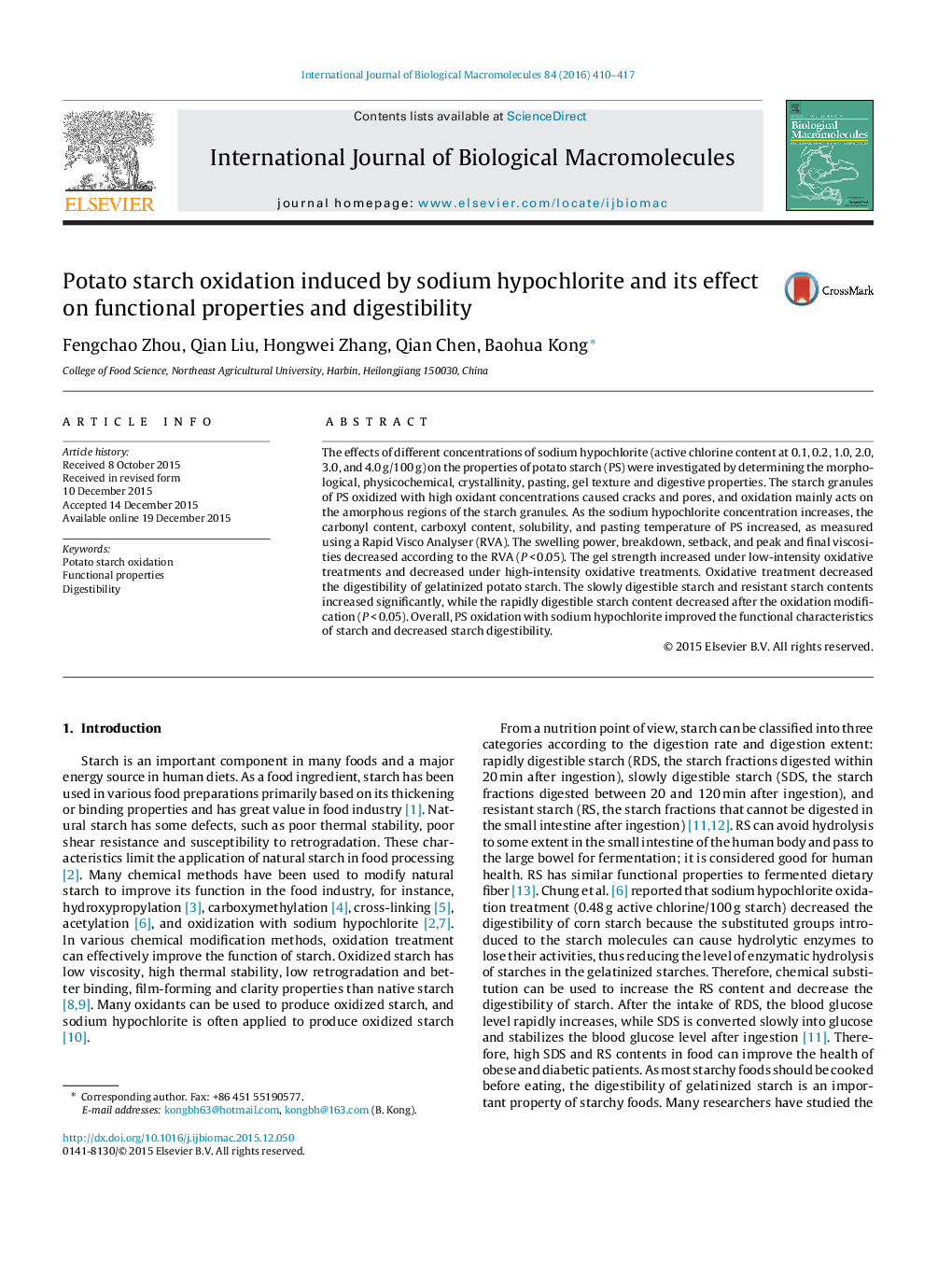| Article ID | Journal | Published Year | Pages | File Type |
|---|---|---|---|---|
| 1986025 | International Journal of Biological Macromolecules | 2016 | 8 Pages |
•Different concentrations of sodium hypochlorite were used for potato starch oxidation.•The starch oxidation occurred mainly in the amorphous regions of the starch granules.•Starch oxidation with sodium hypochlorite improved some functional characteristics.•Oxidative treatment decreased the digestibility of gelatinized potato starch.
The effects of different concentrations of sodium hypochlorite (active chlorine content at 0.1, 0.2, 1.0, 2.0, 3.0, and 4.0 g/100 g) on the properties of potato starch (PS) were investigated by determining the morphological, physicochemical, crystallinity, pasting, gel texture and digestive properties. The starch granules of PS oxidized with high oxidant concentrations caused cracks and pores, and oxidation mainly acts on the amorphous regions of the starch granules. As the sodium hypochlorite concentration increases, the carbonyl content, carboxyl content, solubility, and pasting temperature of PS increased, as measured using a Rapid Visco Analyser (RVA). The swelling power, breakdown, setback, and peak and final viscosities decreased according to the RVA (P < 0.05). The gel strength increased under low-intensity oxidative treatments and decreased under high-intensity oxidative treatments. Oxidative treatment decreased the digestibility of gelatinized potato starch. The slowly digestible starch and resistant starch contents increased significantly, while the rapidly digestible starch content decreased after the oxidation modification (P < 0.05). Overall, PS oxidation with sodium hypochlorite improved the functional characteristics of starch and decreased starch digestibility.
